“Violence only benefits those who have nothing to lose.”
– Jean Paul Sartre
The great pianist virtuoso Duke Ellington once said that, “the masters, frightened by the silence of their slaves, will order them to sing, so as not to give them an opportunity to think and forge a plan of revenge and liberation”. A fact that only adds to the 1857 U.S. Supreme Court ruling confirming that blacks are not citizens. An act which, in addition to its legal dimension, also gave a political dimension to the legal doctrine partus sequitur ventrem, which ultimately comes down to the fundamental economic interests of the American bourgeoisie and landowners in the South. For the majority of southern landowners in the United States, the preservation of slavery was a political imperative, while for representatives of the North, slavery as an institution was a moral and political evil. Something that will further form the basis of the struggle of the militant opponents of slavery, the abolitionists, against the conspirators. Undoubtedly, there were many anti-segregation advocates in the ranks of the authors of the Declaration of Independence, or “the fathers of the nation,” following the example of Benjamin Franklin, who argued that slavery was against the ideals of the Declaration itself.
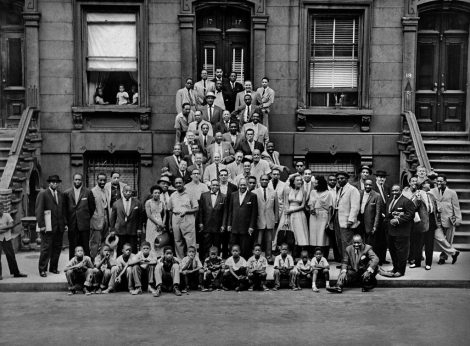
They followed the example of the British reformer William Wilberforce, whose campaign to abolish slavery in the British Kingdom would be won in 1833. Yet the great landowners of the South, for whom slavery was of great economic importance, could not so easily give up the privileges they enjoyed, vehemently opposing the abolitionists who, led by William Lloyd Garrison, the owner of a newspaper, formed an anti-segregation society. It includes Harriet Beecher Stowe, among many prominent figures opposed to slavery. Also, the daughter of the famous Calvinist priest and one of the leaders of the anti-slavery movement, Lehmann Beecher, while her brother Henry Ward Beecher is a prominent preacher. However, Harriet Beecher Stowe is the author of Uncle Tom’s Cottage, published in March 1852, which has been published as a feuilleton in an abolitionist newspaper since June 1851. Her book helps spark a public debate against slavery in the United States, drawing much public attention and the need to create public opinion regarding this evil.
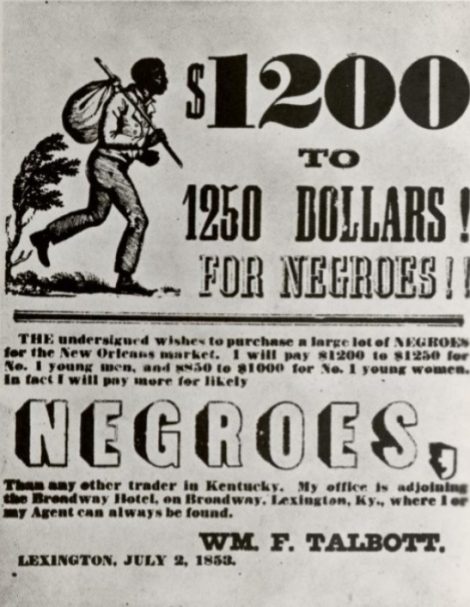
A year later, in 1853, Solomon Northup, an African-American free slave, would write a memoir entitled 12 Years of Slavery between 1841 and 1853, when he was in slavery, before becoming a free citizen again and joining the abolitionist movement. The abolitionists are joined by the famous black activist and humanitarian Harriet Tabman, who will organize as many as 19 expeditions during which more than 300 slaves have been freed. Due to the fact that she was a spy for the Union Army during the Civil War, her head will be blackmailed by landowners and slave owners to a staggering $ 40,000 at the time. Yet all this is preceded by numerous slave revolts throughout the colonized territories of the North American continent. Most notable is the one led by Nett Turner (called the “prophet”) in 1831, the only effective and sustained slave rebellion in the United States. This dispels the southern myth that slaves are content or too servile to stage an armed rebellion. However, Net Turner will pay for this determination with his life, as well as most of his 75 followers who will oppose the force of about 3,000 state police and soldiers, as well as hundreds of white volunteers. A six-week riot will raise the question of US slavery, which will further have strong implications for their history, which will be marked by civil war only thirty years later. However, the abolition of slavery after the war will be only declarative, and segregation in a divided American society will take at least another century.
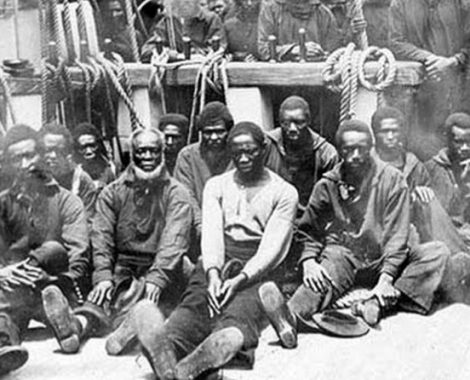
Until the 1963 Washington March, attended by more than 250,000 citizens led by Martin Luther King, Jr., a Baptist priest who delivered a historic talk called I Have A Dream, a dream dreamed of by thousands of African-Americans and their fighters hundreds of years ago for liberation from slavery, as well as civil rights activists and the black cause in general, including Frederick Douglas. In the speech, among others, Dr. King will say:
“Today I want to say to all Americans and all the people of the world… Our current movement will not stop any wave of racism.”
While the great civil rights activist who would later be assassinated by white extremist James Earl Ray was right, his struggle was not in vain. Just as black music from the second half of the 19th and the first half of the 20th century was not in vain, as a protest against the attempt to point out racism and segregation in the United States. But it has managed to leave a culturally indelible mark on the social lives of millions of Americans, values of civilization that prevail to this day. Music that is based on the blue notes and the structure of the 12 most frequently repeated beats, which contains a spiritual character, with all its fervor will bring to the surface the revolt of the ordinary African-American deeply chained to the margins of society without any rights.
Music with which for many decades the enslaved oppressed black citizen of the United States, will not only maintain the spirit that can not be overthrown by the white supremacist, but in the form of protest will challenge its exploiter. Simple notes with emotional charge and content that result from the suffering of the oppressed black worker across the harvested cotton plantations and railways from east to west. Instead of speech that was strictly forbidden during work, notes that through improvisation keep the physical body exposed to effort in “vigilance”. In this way, blacks pronounced English words in their own African way, in harmony with the language of their ancestors. Such speech was called blacktalk by the whites, thus reinforcing the white supremacy at the expense of “black ignorance”.
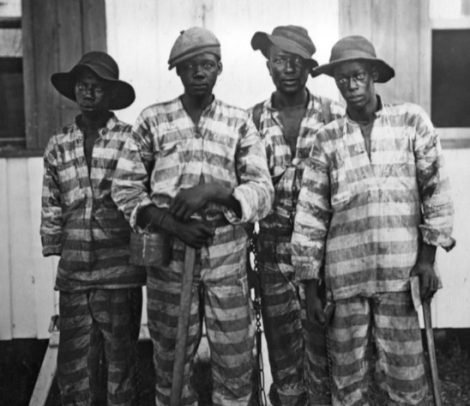
Aware that supreme white masters and exploiters will never understand the magnitude of their philosophy of existence, they reject the stereotypical phrase of their white masters, that they live instinctively, dedicated only to the present, with no desire to oppose or retaliate against their exploiters. Historical data shows the opposite. Namely, Herbert Apterker lists as many as 130 recorded riots in the period between 1663 and 1865, which is proof of the decisive rejection of the shackles. For them, music is just an elixir of life that keeps the spirit rejuvenated and the mind awake. It is no coincidence that the great American philosopher Ralph Waldo Emerson would say that “music is Parnassus for the poor.”
African-American spiritual music rooted in the sub-Saharan equatorial west and northwest of Africa, after the abolition of slavery, will serve to develop new directions, including blues, reggaeton and jazz, which in its own way will be a privilege for whites and the rich. The blues that will later develop in many sub-directions, such as country blues, delta blues, electric blues, boogie-woogies and many others, are characterized by strong emotions emanating from life, harsh reality, the harsh truth of existentialism, the oppression of the dominant white race… The early rural blues initially appeared as a form of free storytelling, where verses were sung more through rhythmic speech than through melody.
The whole dark picture of the music that is born in the ashes of the post-slavery era includes the ambience where it is thus performed, away from the eyes of the community, in dirty and neglected bars and lounges, beds of vices and shelters for guests with questionable morality. An ambience that can capture the image of the relationship between a man and a woman, bad luck, life on the margins and hard times. In the blues as a theme there is generally a domination of the negative aspect of love, personal ups and downs, family disasters, separations and expectations, infidelities and forgiveness, longing for someone, where it is all accepted as a necessity and inevitability, which through a word play is interpreted in a somewhat conciliatory way.
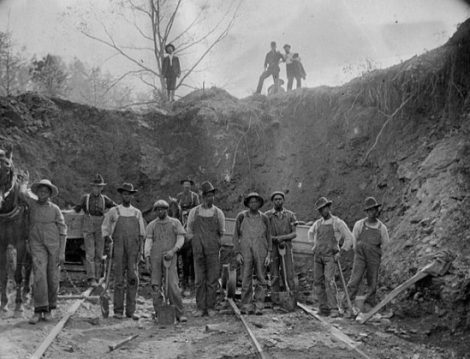
But there is also a part where the social aspect is translated into a 12-beat musical form where there are double repetitions of the verses. It primarily describes the hard work of the black worker, the migration to the big cities in search of a better life, the countless travels and life experiences, all that has to do with existentialism. Finally, we have the politically engaged blues, which openly talks about injustice, exploitation, racism and segregation, but also the refusal to go to war, as a strong protest against colonialism, imperialism and military interventionism in the world. An example of a performance of this type of protest music is the prominent blues musician J. B. Lenoir. But regardless of the theme, the performers of the early blues felt profound relief through the music. As far back as 1801, Carr’s Musical Journal published a text whose author Parks notes during his travels in the South, thus offering the oldest documented evidence of the origin of the labor songs performed by black slaves. He says the following:
“They made their job easier with a song, and they composed one of the songs extempore, while she sang it just for me. It was sung by a young woman, and the others supported her as a kind of choir. “The atmosphere was sweet and sad.”
In 1903, the Baltimore Sun reported on an example where a white boss fired a black man from a railroad group, believing that he sang more than he woked. He thus made a reckless mistake. After that, all the workers lost all will to work, becoming completely ineffective, looking for their friend back in the group. After this, the boss was forced to send him back to work, whereby after his return all the workers in the group started working twice as hard. Even William Christopher Handy, for many the father of the blues, working as a young man in a quarry as a water carrier, has observed that all sweaty workers when singing a particular song experience real relief from the infernal heat that constantly torments them. What is also noteworthy is that in the period from the first half of the 19th century there is very little written data on the development of black music in the years after the independence of the United States.
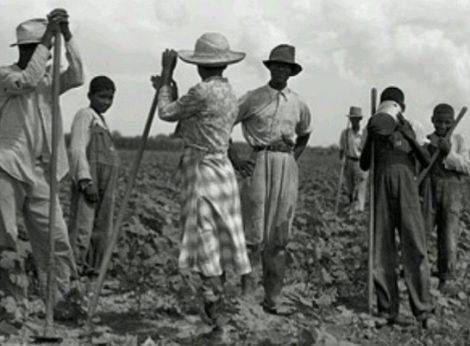
It was not until 1867 that the first black song was released, entitled Slave Song of the United States. For blacks in the north, the beginning of the 19th century and the victory in the war with England marked a transition from slavery to “freedom”, despite the fact that it would not be abolished until half a century later. A formality that will be a fierce struggle for survival and justification of the material foundations in the exploitative conditions of liberal capitalism and a struggle with the former masters, who continue to look at them from above and with contempt, convinced of their inferiority. In their struggle, black writers and rare white friends constantly point to the achievements and merits of famous blacks as proof that “the power of reason is independent of skin color” and that “blacks are by nature not inferior to whites and incapable of achieveing any achievements and successes in science and art “.
What is the freedom of the people, if it is not freedom for every individual in it?
Abolitionist Harriet Beecher Stowe will ask. The road to freedom for the black American population, descendants of slaves from West Africa, is one of the most difficult to set apart in history. The strong spirit that could not be broken by centuries of slavery and later racism and segregation in American society stems from African traditions that spring deep into an ancient culture that cannot be destroyed by the aggressive cultural hegemony of the white race that considers itself for superior. The wave of abolitionism in Europe since the late 1770s, when there are barely 15,000 slaves in England, is even more to blame, while in the United States the number is much higher. Prompted by growing public criticism of British society over slavery, in the United States in the early years of the bourgeois revolution many prominent public figures in science and politics raised the issue of slavery as a moral act, influencing public opinion and at the same time time encouraging the abolitionist movement of action through open agitation and propaganda in the US press.
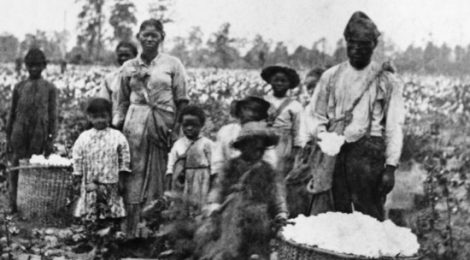
As early as 1773, a large group of blacks petitioned the governor and the Massachusetts State Court for their release from slavery. There is also a powerful organization in the state of Virginia that is committed to freeing slaves, but which requires them to leave the state within a year, elsewise they will become disenfranchised. After the declaration of American independence, all states are preparing new constitutions and laws, including against slavery law, which unfortunately remains just a dead letter on paper. The Virginia Bill of Rights explicitly and unequivocally prohibits slavery. The Massachusetts Constitution of 1780 states that all human beings are born free and equal in dignity and rights.
However, in parallel with this, in the beginning of the 19th century, religious movements awoke in the ranks of the black population. Thus in the years after the successful end of the war with England, the so-called camp meetings, mass religious gatherings of the mixed Protestant population of the North, are gaining momentum. These camps were a powerful factor in the direct integration of the already racially divided American society, and thus an important factor in the abolitionist struggle. They were the product and cause of the special American social phenomenon of mass religious hysteria, the so-called Great Awakening. Later the so-called Second Awakening, during which camps organized and run solely by black preachers appear in the northern American counties of Baltimore, New York, and Philadelphia. This is where fanatical encounters between white and black people take place, creating strong bonds that transcend racial segregation. Abolitionists are becoming more powerful day by day. But abolitionists are not content with just rejecting and abolishing slavery in some states, they are demanding the complete liberation of slaves throughout the United States. They became more and more militant, and in 1833 formed the American Anti-slavery Society, which began printing pamphlets calling for the abolition of slavery, as well as the publication of newspapers and magazines and lectures.
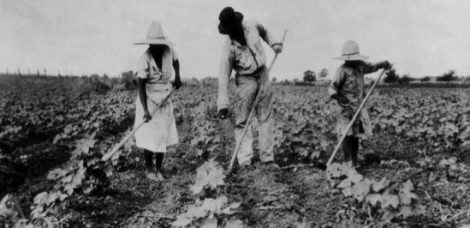
In 1849, William Wells Brown released an anti-slavery songbook called The Anti-slavery Harp, which, in addition to popular English and Irish tunes, also contained original black songs, which often contained politically engaged titles and choruses. Encouraged by abolitionists, slaves began to flee en masse from south to north, despite the fact that in 1850, at the request of the southern states, the so-called Fugitive Slave Law, which obliges northern states to repatriate all fugitive slaves to the South, many of whom have fled across the border into neighboring Canada. The first such systematic organized escapes in the late 18th and early 19th centuries were organized by the Quakers, who were later taken over completely by the abolitionists and a movement called the Subway Railroad. The most prominent of these operations was the former slave Harriet Tabman, nicknamed the Black Moses, who on a dozen occasions helped hundreds of slaves escape north, far away from their masters in the south. However, when the Supreme Court of the United States ruled in 1857 that blacks could not be treated as U.S. citizens, and thus were deprived of all citizenship rights, it became clear to many abolitionists that war was the only way to redress the shameful injustice done by that decree.
The civil war will only accelerate the process of slavery in American society. An occasion for the more pronounced libertarian spirit of the black population in the need to highlight its culture that has its roots in the tradition of the ancient African peoples from Bamako to Kinshasa. The defeat of the Confederate forces brings the freedom of about 4 million slaves across the United States. However, most of them remain in the South, where they become hired workers or rent land from white landowners, while a significant portion goes north, and a smaller number goes west. They carry with them their verses and choruses which in a state of euphoria and freedom they sing en masse, many of them unaware that it is not an end to the patience and struggle, but only the beginning until the final liberation.
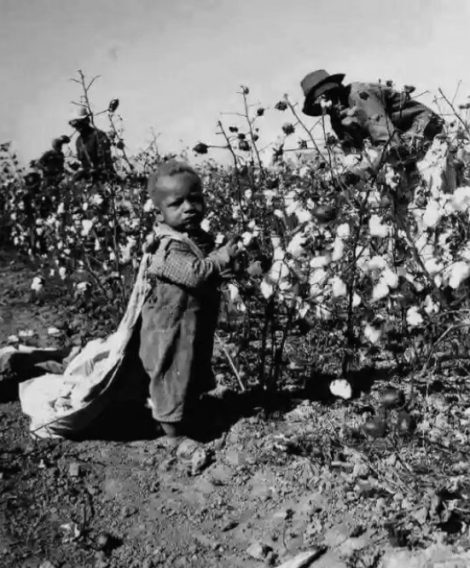
No More Auction Block For Me can be heard everywhere, Babylon is Fallen, Bobolishion’s (Abolition’s) Coming, Before I’d Be a Slave, The Massa Run, Done wid Driber’s Dribin ‘, and many more…
In the late 19th and early 20th centuries, after the abolition of slavery in 1863, African Americans were transformed from slaves into wage labor and the lumpen proletariat. In the great black community of the South, despite the abolition of slavery, in much of the social aspect no major changes are taking place. The vast expanses of cotton of the capitalist landlords were still there, waiting for the cracked hands of the descendants of slaves who were now to be merged into the increasingly impoverished American working class. And it all culminated in the Great Depression of 1929, which plunged the world into a new war a few years later.
Although formally free and able to move freely throughout the country, most black Americans remain on the margins of American society without much choice. Although the Industrial Revolution is at the peak of its development, and the advancement of technology at a galloping pace over time, the African-American worker will be deprived of any kind of progress. Even those who have dared to rent land. Until the Great Depression, nothing will change in terms of cultivating the land, where primitive methods remain part of the operation. The hoe, the wooden plow and the carriage are still part of the environment in which the black community exists. The data show that by the end of World War I, in fields across the Mississippi Delta, 94.5% of black families worked as wage laborers and were the main labor force, and barely 5.5% owned land they cultivated for their own needs. All this contributes to the rejection of work in the field in the ranks of the black community, assessing it as ungrateful.
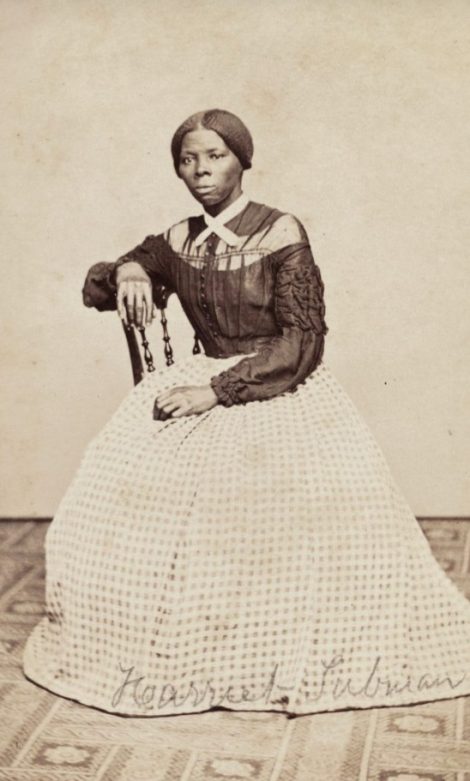
That is why many young African-Americans are starting to make music. An interesing case is the one with the father of the blues, William Christopher Handy, when he confides to his father, a Baptist preacher, that he intends to become a musician, to which he replies that becoming a musician is like selling his soul to the devil. It is indisputable that in the ranks of the church there is a great animosity towards preoccupation with music when it comes to existence. However, many blues musicians who in later years have become priests or preachers of the Baptist Church, during their ministry, try to bridge the gap between the religious community and the adherents of the coming new wave of music, which many see as a cultural and spiritual liberation.
This is best evidenced by the numerous gospel performers throughout the United States, whether it is a commercial gospel or for spiritual purposes following the example of the timeless Mahalia Jackson who is considered the muse of the gospel. That freedom of expression through music should not be an obstacle to the spiritual development of an individual, testifies one of the greatest blues musicians, Blind Lemon Jefferson, who never in his life performed on Sunday, the day dedicated to God. The day when many people attend churches where spiritual music is often performed. The criticism coming from the ranks of the church towards the new cultural wave, in the foreground of which blues, reggaeton and jazz are promoted as a kind of protest against social life, primarily refers to the ambient moment outside the denomination. A musical performance that mostly takes place on the stage in various bars and salons, which as a rule were considered places of fornication, debauchery and questionable morality.
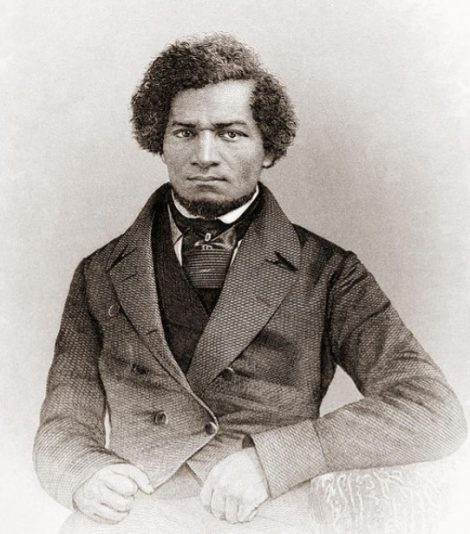
This “moralization” by the religious community is somewhat reminiscent of the years before the civil war, when white preachers in the name of God were placed in the service of the bourgeoisie, preaching the subjugation of slaves to their masters. Calls such as:
“Never steal or lie to your masters, for that is wrong. Such behavior is a sin against the Holy Spirit, and is the basis of your ingratitude to the masters who feed, clothe, and protect you. “The devil is the one who urges you to rebel and fight for freedom!”
Some Methodist preachers in Alabama went even further during their religious studies, offering the answer to the question, “Why did God create me?” The Bishop of Virginia, in his sermons to the slaves, taught them that the sins they had committed against their masters were in fact sins against God himself, saying:
“I tell you, your masters and masters are God’s overseers, and if you sin against them, in the next life God alone will punish you badly!”
Those times were deeply etched in the collective memory of black slaves, and now that the time had come to taste the fruits of freedom, again someone seemed to want to deny them that pleasure. For many reasons, the antagonism against the wave of black music will continue for many years to come, both in the form of a boycott and through systemic measures that often contained a repressive character. It is known that many music artists will be investigated and monitored by the FBI for alleged illegal activities.
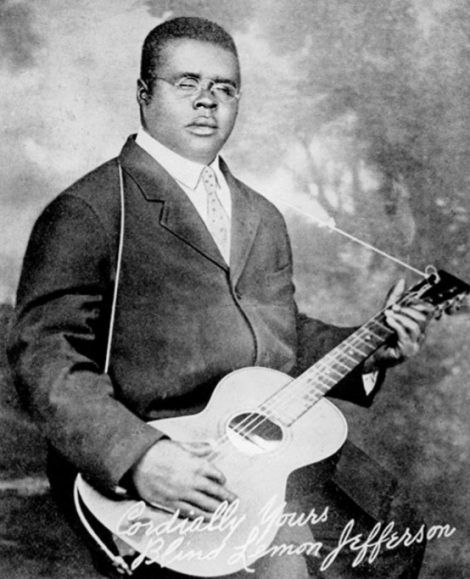
A glaring example is the one associated with jazz diva Billy Holiday, who becomes the target of Federal Bureau of Investigation chief Harry J. Enslinger. A man seeking an official ban on all her public appearances at cabaret shows across the United States because of the “bad morals” she would spread as a former convict in public. Namely, the famous Lady Day due to drug problems will be the subject of observation by the FBI Narcotics Department, for which the investigation against her will later turn into a personal fight against her by the declared racist Harry J. Enslinger, who will ruin her life. A man who does not hide his views on black music performers, often talking about how blacks cross all boundaries in American society, and that black jazz musicians who enjoy marijuana have created devilish music.
However, blues and later jazz will cause the greatest cultural shock since the Great Depression, far more than the Beat movement and the sexual revolution of the late 1960s did, as many today believe. Blues and jazz music is becoming commonplace with millions of Americans waking up and falling asleep, more on radio and less on television in American homes. The record labels will sprout like mushrooms fighting for the signature of black musicians who are increasingly establishing themselves on the music scene despite the racial divisions within American society. What is worth mentioning is that unlike jazz, where after the entry of white musicians in some way it will become music for those for the more sophisticated circles, ie. for the upper middle class gentlemen, while in the blues will seek refuge the majority of the working class who do not have such a refined taste for art, but who deep down in their souls seek solace after a hard day’s work in the conditions of cruel capitalism that thousands of migrants from Europe defined it as the American dream. It is indisputable that the blues will become a consolation for thousands of factory workers, or at least a magical drink that intoxicates the soul, while the tired body is immersed in bourbon. The great jazz pianist Duke Ellington would often say that if the blues were wine, he would be drunk every day.
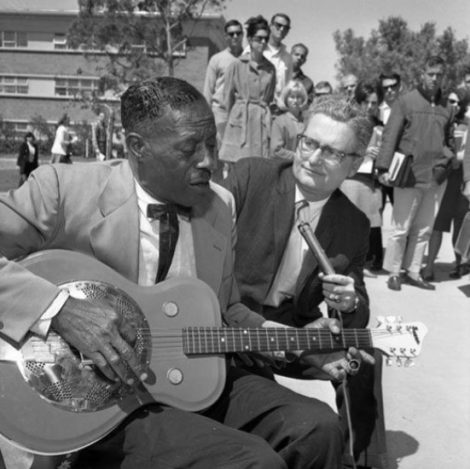
Blues as a word originates from the English word blue which, in addition to blue, also means a kind of sadness. English lexicographers discovered that the phrase “to look blue” dates back to 1550 and means “to suffer or be in a bad mood.” The English use of the term “blue devils” for evil demons goes back to 1616. The figurative use of the word blue as a metaphor for bad mood leads us back to the year 1787, but the plural form of that word (blues) describes the meaning of delirium. If we look at the use of that word on American soil in the early 19th century, we will see that in most examples it was synonymous with sadness, from which the misconception is literally accepted, that the blues is an expression of a sad and melancholy mood.
However, after the Great Depression, and especially after World War II, folklore from cotton and corn plantations slowly moved to large urban areas that became centers of blues and jazz, and later rock and roll. With that, the blues is slowly but surely developing into an urban metropolitan blues that is becoming a kind of blues art (such as jazz) which will later evolve into rhythm and blues, becoming the basis for the development of a new music genre, rock and roll or rock music. Thus, in the urban blues, which becomes a synthesis between country and delta blues on the one hand and electric blues on the other, we less and less detect that diverse lyrical content that sings of hard physical work, poverty, difficult economic situation, the transition from slavery to freedom and even racism and segregation.
The lyrics are becoming simpler and it is more and more concerned with love and sexual worries, the relationship between a man and a woman, an unhappy marriage, but also alcoholism and drugs in the family. All these troubles and troubles of the people of the big cities, who in the twilight of the American dream that is born as a result of prosperity, take on new forms of vices as an integral part of consumerism and mass consumption. In all that brilliance of advertising colors where blue dominates the most, the so-called prison blues is born.
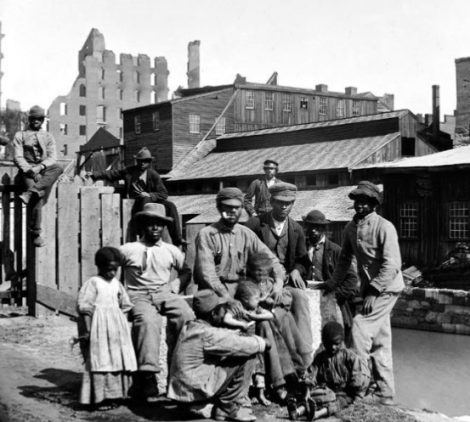
A transition of a culture that is slowly moving from an agrarian and rural setting to an urban environment, far more developed in every way, where the opportunities for creative expression are far greater, primarily due to the large audience, repertoire and demand. There is a growing need on the music scene for a philharmonic performance of music such as jazz, in the style of orchestrated classical music. Most blues and jazz musicians attracted by the new possibilities travel far north of the Mississippi Delta to centers like Detroit and Chicago, carrying their tin orchestras or remnants of the reggaeton, or forming new blues and jazz ensembles. Some of them go to the far west, the land of all possibilities. Thus, chords from the dusty Beale Street in Memphis and Bourbon Street in New Orleans in the early ’60s moved to 20 Grand Lounge and Grande Ballroom in Detroit, or Kingston Mines and Lee’s Unleaded Blues in Chicago, the city where the famous Robert Johnson will say it is a sweet home for the blues.
Yet no matter how much “passivation” there is in the socially engaged life of the black community, whose members are increasingly taking their place on the cultural scene, there are still individuals on the US blues and jazz scene who dare to protest, through their own authenticity. expression, to make their own critique of developments in American society. The famous blues musician J. B. Lenoir is one of them. He often sings about injustice, racism and soldiers in the Vietnam War, as an introduction to the wave of anti-war protests that will follow in the late 1960s. An expression of revolt that will not only be part of the cultural scene, both music and film, but also sports, politics and academia. A civil protest that will penetrate deep into all the pores of a racially divided American society. Lenoir’s repertoire includes verses such as:
„Every black child born in Mississippi,
you know that poor child was born dead.“
or:
„I never will go back to Alabama,
that is not the place for me.
I never will go back to Alabama,
that is not the place for me.
You know they killed my sister and my brother,
and the whole world let them peoples go down there free.“
A musician who will leave a big mark on the American music scene with his politically engaged work, for which the popular British blues musician John Mayol will later revere his death in the song Death of J. B. Lenoir.
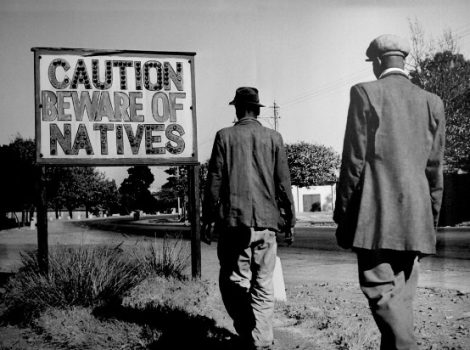
Lenoir will not be alone in his protest songs, which in the ’50s and especially in the’ 60s of the last century, will occupy a high place on the American music scene. On the contrary, more and more people will appear in the world of culture and art in the United States who will contribute to the development of the music scene that will become a corrective of American society. Politically engaged artists increasingly support the distribution of daily and weekly newsletters, newspapers and magazines, aimed at promoting radical songs among the broad layers of the working class, primarily folk songs, but also blues and jazz. All of this is supported by the Works Progress Administration (WPA) project, which has the task at the federal level of promoting art in the working class to create a singing labor movement that will raise workers’ awareness through thousands of union refrains. Guided by the idea that, just as every church has its own choir, so every factory should have its own choir.
But the US ruling elite does not think so, especially after World War II and the bloc division that will result in a cold war between the capitalist West and the Socialist East. An overture to all this is the enactment of the U.S. Foreigners Registration Act of 1940, also known as the Smith Act, which further complicates the situation of economic migrants, who primarily belong to the working class. McCarthyism will further complicate the situation of the working class and its supporters in the United States. That political instrument, as the highest degree of repression, will not only be an attempt by the American ruling class to limit the way the working American people can organize, but also to suppress any attempt to create a new culture that can be consumed. The music produced by Woody Guthrie and similar musicians at the time was a unifying force in the leftist circles of American society, where members of the Black Panthers, as well as members of the Revolutionary Communist Party, which includes many Maoists, found refuge.

The Communist Party of the United States (CPUSA), which at the time had about 100,000 members, despite being more of a Social Democrat than a revolutionary, was a major factor in the mass unification of the American working class like no other party before and after in the short American history. Within the party there is a broad social democratic consensus between the factory workers and the various popular fronts united against the exploitation of the capitalist ruling class and repression by the US Government. A climate of radical working-class counterculture is being created within the party itself, through open propaganda about workers’ rights and class divisions, but also the racial divisions that are becoming more pronounced at the time in the dominant American culture. Art, especially music and film, is increasingly trying to make the most of radio and television as a means by which left-wing artists can propagate and exchange ideas.
In the heyday of the new cultural industry, they see their opportunity to incorporate socialist ideas into the worldview of the average American citizen, worker, farmer, peasant, thus changing the cultural landscape of a more revolutionary America. In addition to radio and television, writers, musicians, filmmakers, and artists on the left-wing political spectrum are increasingly using the services of record labels and film studios in their efforts to create a counterculture in American society. People like Woody Guthrie, Paul Robson, J. B. Lenoir, Heidi William Ledbetter (Led Belly), James Langston Hughes, Richard Wright, Josh White, Billy Holliday, Joan Baez, Peter Pete Sieger, Leonard Bernstein, Lee Hays, Burl Ives, Alan Lomax, Aaron Copland, the group Weavers, and many other politically engaged musicians and songwriters, as well as filmmakers of the caliber of Charlie Chaplin, Stanley Kubrick, Orson Welles, Dalton Trump, Arthur Miller, but also their academic and intellectual elite supporters, such as Albert Einstein, Bertolt Brecht, Waldo Miller Salt, Ernest Hemingway, John Steinbeck, and a host of other prominent figures from the worlds of science, literature, film, visual arts, and sports will be at the forefront of anti-communist policy in the United States.
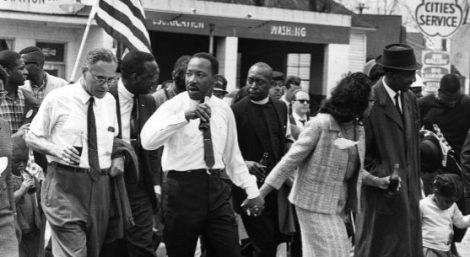
Many of them will be subject to observation by the Federal Bureau of Investigation – FBI, as well as the Congressional Committee on Anti-American Activities. Some of them will end up in the political pamphlet Red Channels, whose authors John J. Kinnan, Francis J. McNamara, Phillips H. Lord, Theodore S. Kirkpatrick, Kenneth M. Baerley and Vincent Hartnett published it in 1950 to denigrate prominent American public figures who allegedly aided the Communists in influencing US radio and television. A few years earlier, in 1947, Walter Steele, executive director of the far-right National Republic magazine, would testify before the Committee on Anti-American Activities, where he would read aloud a quote from Communist Party Secretary-General William Z. Foster, where he praises folk songs and ballads, their performers, their poetry, their theatrical performances, their artistic handicrafts, advocating the importance of art as a social weapon.
To Walter Steele, this quote serves as a warning that the Communists are indoctrinating Americans in the arts, especially in folk music. Political propaganda that would later be largely present in the rhetoric of the John Birch Society, an ultra-right group led by anti-communist ideas, radical extremists who, among other things, oppose the Civil Rights Act of July 2, 1964. (Civil Rights Act of 1964). The anti-Communist campaign will also be hit by the Communist Party of the United States newspaper Daily Worker, in whose premises the US Tax Administration (IRS) will raid on charges of allegedly unpaid taxes by the newspaper. What a coincidence! Only a month after Nikita Khrushchev’s historic speech on February 25, 1956, when at the Twentieth Congress of the CPSU, the party would get rid of Stalinism forever. Just two years later, Dail Worker due to financial problems will be forced to finally stop publishing.
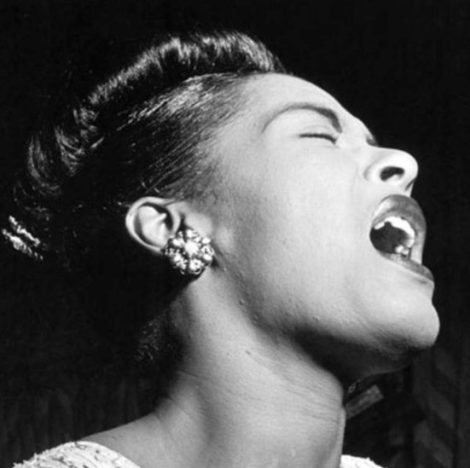
In the 1930s and 1940s, music was increasingly used as an expression of protest, whether it was folk, gospel, blues or jazz. The wild Billy Holliday will perform the timeless Strange Fruit at the Café Society in New York in 1939, which will later be the subject of observation by the Federal Bureau of Investigation, whose anti-narcotics investigator Harry Ansling tries to ruin her life, which he unfortunately succeeds in doing. The verses come from the pen of a Russian-American Jew, Professor Abel Miropol, who witnessed the lynching of two black boys by a group of white racist people. A song that sends a powerful anti-racist message in the fight for civil rights in the United States.
The death of Billy Holliday in 1959 will not diminish the socio-political engagement of progressive blues, jazz and rock musicians; on the contrary, they will increasingly publicly express their political views against US colonialism, imperialism and military intervention, as well as after increased racial segregation in America. Doing all this in a protest way through his work. Among the most important music artists of the time is Peter “Pete” Sieger, who comes from a completely artistic family, whose father is a musicologist and whose mother is a respected violinist. As far back as 1955, in the era of Joseph McCarthy, Sieger was called to testify before the Congress Committee on Anti-American Activities about his political leanings, but he refused to testify about what he would be punished for disrespecting Congress. The blacklist compiled by McCarthy’s team will include thousands of names of American citizens, including celebrities from the worlds of culture, art and film, accused of anti-American activities. Siger would later say:
“I love my country very much and I categorically reject this implication, that some places where I have sung, some of the people I have known, some of my opinions, whether religious or philosophical, or maybe I am a vegetarian, all this to me makes him less American.”
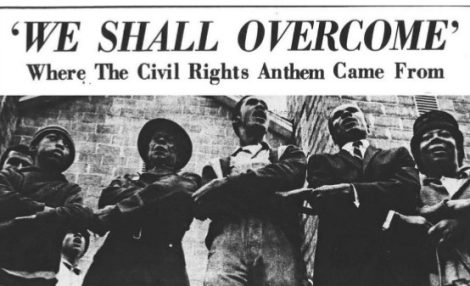
This would lead to him being indicted in 1957 for contempt of Congress, as was the case with many other prominent figures including the famous screenwriter Dalton Trump and the artist Will Gere. Sieger will be sentenced to prison, which will later be overturned, but he will be banned from traveling because he is blacklisted. Many argue that Sieger remained a staunch communist and critic of capitalism for the rest of his life, committed to his ideals, never renouncing his strong leftist views. However, Sieger later in the years, responding to criticism that he was a Stalinist apologist, increasingly sought to distance himself from his communist past, sharply criticizing the Soviet regime under Brezhnev, while in the 1980s holding concerts in support of Polish anti-communist Solidarity union led by Lech Walesa. He will experience complete self-devaluation in 2009 when he will have the “honor” to sing at the inauguration of military interventionist Barack Obama.
Sieger will be remembered for putting the song We Shall Overcome back on the repertoire, which was also performed by Guy Caravan in 1959, and later at Woodstock ’69 by Joan Baez. The song is considered the unofficial anthem of the American civil rights movement in the 1960s, based on a gospel refrain by a black Methodist priest and composer, Charles Albert Tyndley. Sieger is most associated with the legendary Woody Guthrie, the American folk singer, musician and songwriter, one of the most influential figures in the development of American music in the 20th century. A man whose communist worldview will be an inspiration to many in the United States to openly oppose McCarthy’s madness and witch-hunting. His This Land is Your Land will become a kind of alternative anthem of the United States, a song that is his major work.

The already mentioned Joan Baez also has an important place in the annals of politically engaged art. Baez is synonymous with rebellion, protest and reaction in society. A woman who sticks to the maxim, that in engaged art silence is not gold. It is proof that artists are most dangerous when they are loud. Born into a Quaker family that will have a major impact on her worldview. Her engagement will succeed in mobilizing large masses of young people who will lean towards counterculture in the 1960s, when some of the most radical changes in Western capitalist society will take place. In 1963 he performed the song We Shall Overcome at the Washington March, led by Dr. Martin Luther King. In the late 1960s and early 1970s, she was active in the anti-war campaign, visiting North Vietnam in late 1972.
Unfortunately, as in the case of Pete Sieger, Joan Baez will publicly support the candidacy of military interventionist Barack Obama. Interestingly, many of the politically engaged artists, musicians, and songwriters will in their lifetime distance themselves from any connection to the Communist Party of the United States and its activities. Even those who in any way were in contact with its members in the early years, such as the example of prominent country singer and artist Tex Ritter, the founder of the Country Music Association, who in an interview with the New York Times in 1970 in about the beginnings of his career and contacts with progressive leftists in New York will state:
“In those years in New York I got to know the communists quite well. I knew them. They listened to my songs. I used to call myself a folk singer. In those few years it came to a point where it was very difficult to say, where folk music ended and where communism began. “That’s when I stopped calling myself a folk singer.”
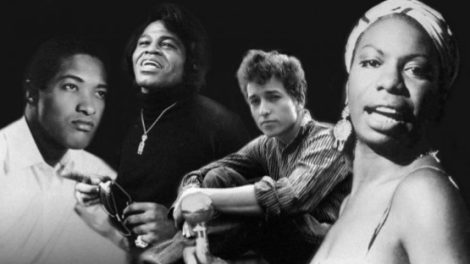
However, unlike the repentant communist Sieger and the liberal Baez, another artist, and above all a pedagogue, teacher and political activist, will become a martyr of the military junta regime in Chile, led by General Augusto Pinochet, who will overthrow the first socialist President-elect Salvador Allende. The great human rights activist and one of the symbols of the revolutions in Latin America, Victor Hara. The man with a big heart and a clear mind, who spoke publicly on behalf of Salvador Allende about Chile as a country of socialist values and prosperity of the Chilean people. But the CIA and its spy agents in the form of Chicago Boys-type economic emissaries did not think so. On September 11, 1973, with the help of the far-right opposition and the army, they staged a coup that brought Army General Pinochet to power, while in a violent coup they assassinated the legitimately elected President Allende, who had taken office three years earlier.
The coup in Chile, part of Operation Condor in South America, killed hundreds of associates and supporters of President Allende, including Victor Hara, as well as the world-famous poet Pablo Neruda, who is believed to have been killed a few days later in Argentina where he is on the run. In the years to come, the regime of Augusto Pinochet will liquidate tens of thousands more who will oppose his repression, paying the price of freedom with blood. Victor Hara as a victim of the altar of freedom left his young life which he previously dedicated to the young Chilean generations who today after almost half a century as people in old age speak only in superlatives about the great humanist and freedom fighter Victor Hara. Victor’s opus with anti-colonial charge and revolutionary enthusiasm, among others, besings the great revolutionary names such as Ernesto “Che” Guevara and Camilo Torres. Songs that still boil the blood of many subjugated peoples from the Panama Canal to the Land of Fire.
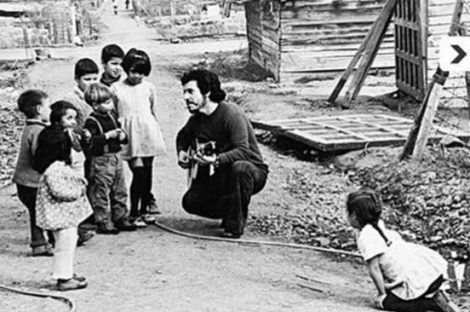
Another musician, no less valuable than Bob Dylan and Leonard Cohen, is certainly the little-known Sixto Rodriguez, an American folk singer and songwriter born in 1942 in Detroit, Michigan. This remarkable musician, whose career will take a turn for the worse after his two albums were released in the early 1970s, will be marginalized by the American radio stations, not so much because of his rejection of his music, but because of his sharp criticism of American capitalist society both as a musician and as a songwriter. Until, almost three decades later, he was “accidentally” rediscovered in the Republic of South Africa by two of his admirers who would later initiate his search and find in the United States.
A few years after his discovery, he was re-promoted in the media through the documentary Searching for Sugar Man, an Oscar winner in 2013, as well as the prestigious BAFTA of the same year, plus a special award at the prestigious Sundance Festival a year earlier, and many other awards and nominations. However, what is most significant in the work of Sixto Rodriguez is that his music was generally accepted in the time of Apartheid in South Africa, where in the midst of total media darkness and horrific persecution by the regime, copies of his albums Cold Fact and Coming from Reality will appear, in the lyrics of which many will recognize his sharp critical narrative of the social character of American society. Many of his songs become anthems against the apartheid regime in South Africa.
Unaware of the fact that he is popular in South Africa, where Rodriguez is considered more popular than Bob Dylan, disappointed by the response of the American public to his work, he withdraws from the music scene and lives a completely normal life, sometimes accompanied by hard physical work for bare survival. Rodriguez is fully aware of all aspects of the poorest in society, so he does not give up his political engagement. On the contrary, he continues to point out all the anomalies his community encounters and is actively working in the field of working class education in Detroit, which is increasingly falling into a stalemate that culminates in the collapse of the automotive industry and the dismissal of thousands of workers.
He even participates in a political campaign to enter the city government, from where he could act more effectively. Among his greatest admirers and followers of his work is the name of Steve Biko, a South African anti-apartheid activist and African socialist, leader of the Black Consciousness Movement – BCM. A movement through which Biko seeks to organize the majority black population in the fight against the regime of white immigrants. After the riots in Soweto, he was arrested and beaten to death, becoming the most famous martyr of the anti-apartheid movement in South Africa. In his honor, in 1980, Peter Gabriel dedicated the song Biko to him.
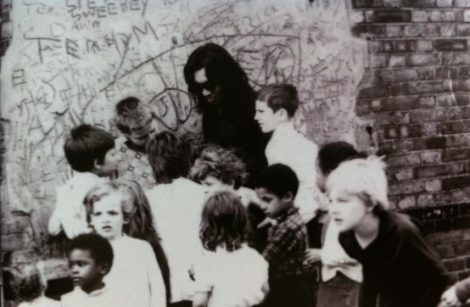
Also worth mentioning is the engagement of the Beatles member John Lennon, who on many occasions publicly criticized the policy of interventionism in the world, following the example of the Vietnam War, but also the Apartheid regime in South Africa. Some of his songs like Working Class Hero; War Is Over; Power to the People; Imagine and Give Peace a Chance will leave an indelible mark on the history of music, but also on politically engaged art. When it comes to social and political engagement in music, one can not fail to mention the many musicians around the world, devastated by military conflicts, countries in which, after the rejection of colonialism, internal ethnic conflicts continued to threaten peace, welfare and prosperity of their citizens.
In the area from Kingston to Mogadishu and from El Ayun to Soweto, we witness hundreds of names who with their creative work in music in the form of politically engaged art, managed to be corrective but also initiators of social change, by rejecting colonialism, condemning imperialism and a critique of the capitalist world order. Almost everyone, without exception, called for an organized struggle against the ruling structure of the bourgeoisie and its political lackeys. In the end I would mention only a few names, starting with the inimitable Bob Marley, a man whose whole life was reduced to civil protest, as well as representatives of the anti-colonial music wave such as Fela Kuti, Ali Farka Toure, Habib Koite, Rocia Traore, Amadou and Mariam, and the band Tinariven, whose leader Ibrahim Al Habib is a notion of an anti-colonial fighter. Most of them belong to the free peoples of sub-Saharan Africa, the Mauri, the Sahara and the Tuareg, who never allowed themselves to be subjected to the yoke of foreign invaders and foreign interests.
No less important to mention are the lesser-known Aziza Brahim, Mariam Hassan, Naim Alal and Tiris, who bravely support the revolutionary struggle of the Polisario movement for the liberation of Western Sahara by the Kingdom of Morocco, which has occupied this territory, as well as the free state Azavad. The struggle continues today, as evidenced by countless music performers, fierce critics of the existing capitalist system. The members of the group Yorum Grup are the biggest witnesses to that, even giving their lives for freedom, going on hunger strike to death. In 2020, bassist Ibrahim Gekcek and vocalist Helin Bölek passed away. In February 2021, the famous Spanish rapper Pablo Hassel was arrested again for “insulting” the royal crown and glorifying terrorism, acts for which a Spanish court sentenced him to 9 months in prison.

However, the struggle continues until the final victory and the attainment of freedom. Because, as the great German philosopher G. W. F. Hegel would say: “The one who merely flees is not yet free”.
Author of the text Gordan Stosevic
Translation of the text Deni Dagalev
Posted on September 4, 2021 by Il Grido del Popolo©

You must be logged in to post a comment Login